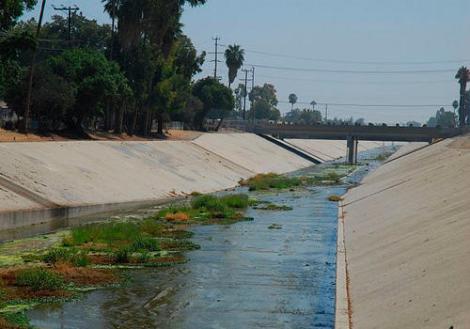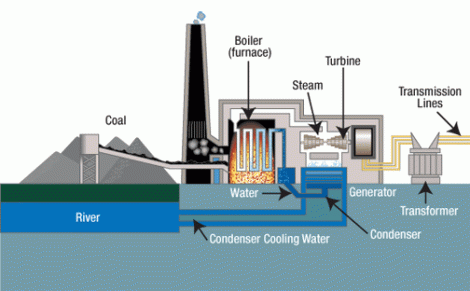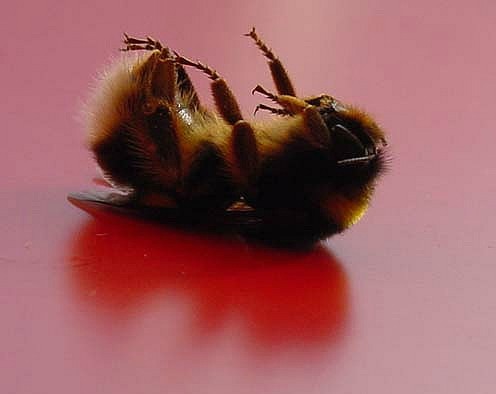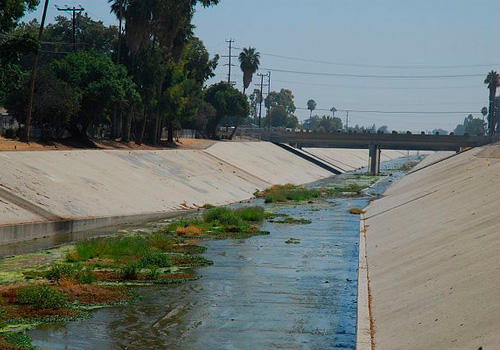 In 2005, Americans used 410 billion gallons of water a day. In the spirit of the soon-to-commence-we’ve-heard London Olympics, that’s enough to fill 620,808 Olympic-sized swimming pools. In the spirit of the 2000 Sydney Games, it’s three times the amount of water in Sydney Harbor. (How much we use now is probably similar, but the U.S. Geological Survey’s research on 2010 won’t be ready until 2014.)
In 2005, Americans used 410 billion gallons of water a day. In the spirit of the soon-to-commence-we’ve-heard London Olympics, that’s enough to fill 620,808 Olympic-sized swimming pools. In the spirit of the 2000 Sydney Games, it’s three times the amount of water in Sydney Harbor. (How much we use now is probably similar, but the U.S. Geological Survey’s research on 2010 won’t be ready until 2014.)
Half of the water we use goes to power generation. Michael Webber, associate director of the Center for International Energy and Environmental Policy at the University of Texas, finds that worrisome, given our recent water-access difficulties. (Yes, we’re talking about the drought again. Get used to it.) He wrote an editorial for The New York Times titled, “Will Drought Cause the Next Blackout?”
During the 2008 drought in the Southeast, power plants were within days or weeks of shutting down because of limited water supplies. In Texas today, some cities are forbidding the use of municipal water for hydraulic fracturing. The multiyear drought in the West has lowered the snowpack and water levels behind dams, reducing their power output. The United States Energy Information Administration recently issued an alert that the drought was likely to exacerbate challenges to California’s electric power market this summer, with higher risks of reliability problems and scarcity-driven price increases.

Image courtesy of the Tennessee Valley Authority.
You may remember how power plants work. In a coal plant, as illustrated above, coal is burned to heat water, which becomes steam. The pressure of the steam is used to rotate a turbine, which spins a magnet that creates electricity. The steam is then cooled back into water and pumped back out to the source. Without water, there’s no steam. With no steam, there’s no power.
Webber’s article isn’t the first time the link between drought and power generation has been raised. A survey of electricity providers earlier this year suggested that water availability was a primary concern. But the nexus is worrisome: Increased drought means less water. Increased drought also means higher temperatures. Higher temperatures mean increased power usage.
Webber suggests ways in which we can soften the impact. Conservation; reduced water use for extraction, as in fracking; increased use of reclaimed water. And, of course, increased use of renewables:
A plan proposed by the Obama administration (requiring new power plants to emit no more than 1,000 pounds of carbon dioxide per megawatt hour generated) would encourage utilities to choose less carbon- and water-intensive fuels. Conventional coal plants, which are very thirsty, exceed the standards proposed by the president. But relatively clean, and water-lean, power plants that use wind, solar panels and natural gas combined cycle, would meet them. Thus, by enforcing CO2 limits, a lot of water use can be avoided.
Wind turbines, for example, use very little water. By which we mean no water. More wind turbines, less water. Done and done.
None of this should come as a surprise. Back in 1999, Yasiin Bey (then known as Mos Def) wrote a song, “New World Water.” (Seriously!) An excerpt below.
You can laugh and take it as a joke if you wanna
But it don’t rain for four weeks some summers
And it’s about to get real wild in the half
You be buying Evian just to take a fuckin bath …
See I ain’t got time try to be Big Hank,
Fuck a bank; I need a twenty-year water tank
Cause while these knuckleheads is out here sweatin they goods
The sun is sitting in the treetops burnin the woods
And as the flames from the blaze get higher and higher
They say, “Don’t drink the water! We need it for the fire!”
The hip-hop community and academics agree: The time to address our water problem has arrived. Without power, after all, how are we going to listen to music?



